|
Platycerium Panama |
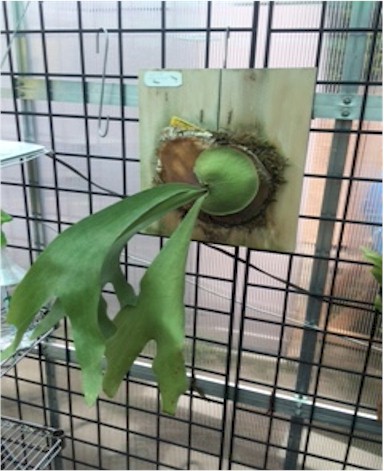 There is a lot
of confusion as to how the P. panama is classified. Wendy
Franks lists it as a unique species in 1969. Today there
are a number of web sites that classify it P. hillii cv Panama.
Discussions with members of the Los Angeles International Fern Society
are a little split on the opinion. However the discovery of a
well established Panama at Norm NakanishI growing area appears to have
settled the issue that the Panama is indeed a cultivar within the
Hillii species. There is a lot
of confusion as to how the P. panama is classified. Wendy
Franks lists it as a unique species in 1969. Today there
are a number of web sites that classify it P. hillii cv Panama.
Discussions with members of the Los Angeles International Fern Society
are a little split on the opinion. However the discovery of a
well established Panama at Norm NakanishI growing area appears to have
settled the issue that the Panama is indeed a cultivar within the
Hillii species.There was some thought that P. panama started at a nursery on 20th Street in Miami after its owner, Mr. Bryant, saw the original plant on a palm tree in Panama and had it sent to his nursery, in about 1960. It has been called ""The 20th Street Platycerium". The nursery is no longer there, but today it is believed that the P. panama did not come from Panama, but is a product of accidental cross pollination that occurred at the 20th Street Nursery. The P. panama is an easy plant to grow outdoors if protected from temp extremes. Experience shows it tolerates temp below 40 and up to 100 degrees F. without problems. It likes humidity, and takes in water from night time dew when possible. The P. panama is a small platy and slow growing. The photo above on the right was taken in May, 5 months later the new shield frond is still growing. Once established it volunteers pups or one can propagate spore from the fertile fronds.
The young P. Panama has a round shield like the P. ridleyi or P. madagascariense which can make it difficult to water. On the other hand, since it protects its water store, it does not dry out easily and may experience rot if over watered. The shield frond is thin like P. bifurcatum. As the platy matures and displays its traits better, the shield frond becomes more typical of the common P. hillii. Roy Vail suggests that platyceriums closed on the top like this one live in a rain forest and can not be expected to tolerate dry periods. Generally speaking, in the northern hemisphere the best time to remount the P. panama is around November as new shield fronds will start forming in December and cover any mounting media.
|
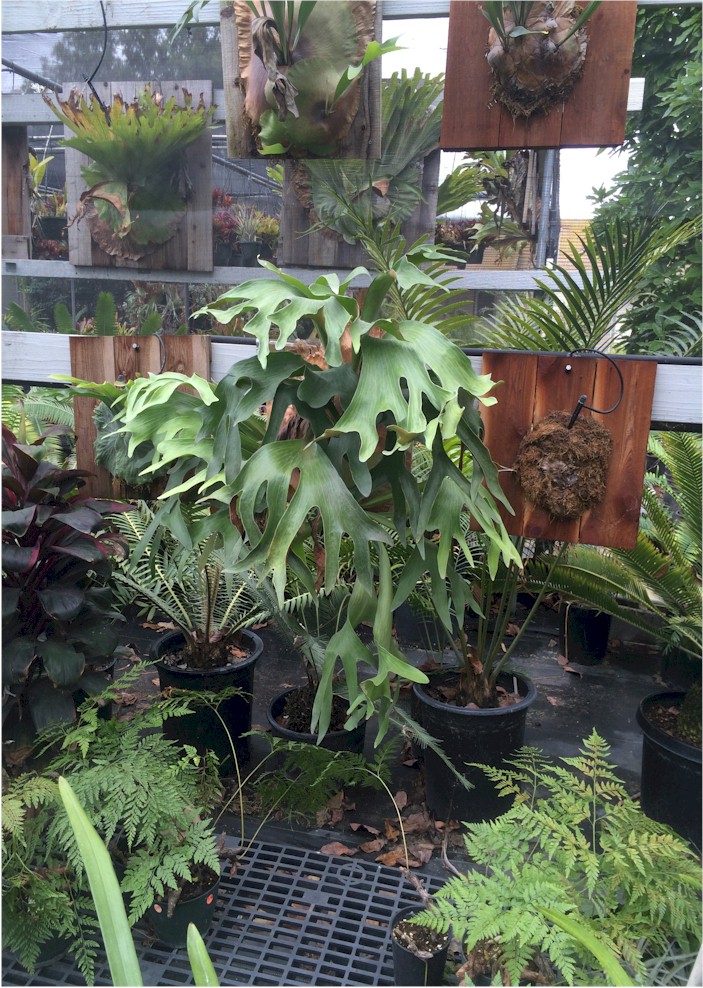
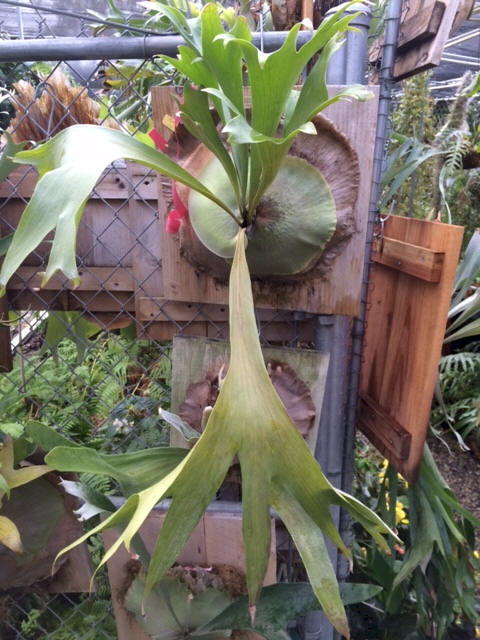 The fertile fronds are wide, waxy, and dark green in color on top.
The bottom of the fertile fronds have whitish hairs giving it a sheen.
Most the images we have only show two wide fingers but more
established individuals develop wide fertile fronds like the P.
hillii. It is suspected spore
patches grow on the underside of the fertile frond fingers.
The fertile fronds are wide, waxy, and dark green in color on top.
The bottom of the fertile fronds have whitish hairs giving it a sheen.
Most the images we have only show two wide fingers but more
established individuals develop wide fertile fronds like the P.
hillii. It is suspected spore
patches grow on the underside of the fertile frond fingers.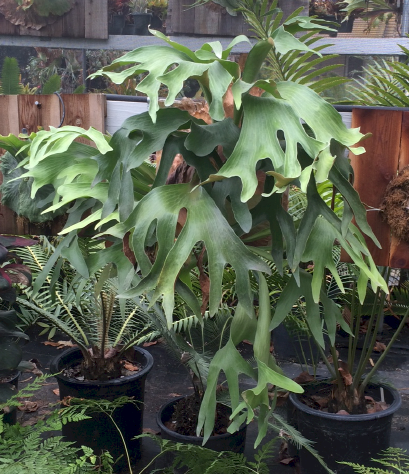 The
photo on the right is from Norm Nakanishi's garden and is a well
established platy clearly displaying the P. hillii traits.
Notice how wide and how many forks are on the fertile fronds.
The shield fronds form a closed top making it difficult to collect
falling debris and water. However the closed root ball sill
store water better.
The
photo on the right is from Norm Nakanishi's garden and is a well
established platy clearly displaying the P. hillii traits.
Notice how wide and how many forks are on the fertile fronds.
The shield fronds form a closed top making it difficult to collect
falling debris and water. However the closed root ball sill
store water better.
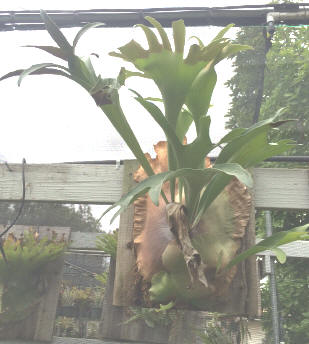 The bottom photo
on the left from Norm's garden shows how the well established shield
fronds are typical of the P. hillii species that does not form
a basket. it hugs the tree/mount to protect its rhizome from excessive
rain, or over watering.
The bottom photo
on the left from Norm's garden shows how the well established shield
fronds are typical of the P. hillii species that does not form
a basket. it hugs the tree/mount to protect its rhizome from excessive
rain, or over watering.